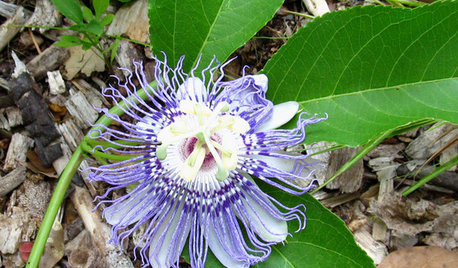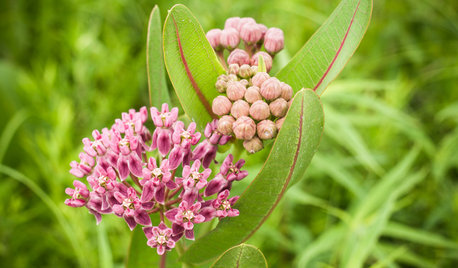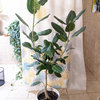Black Pearl Seedlings. Leaves Turning Purple, is this normal?
iluvbotany4life
14 years ago
Related Stories

FALL GARDENING5 Ways to Put Fall Leaves to Work in Your Garden
Improve your soil and yard the organic way with a valuable garden booster that grows on trees
Full Story
COLORFUL HOMESHouzz Tour: Turning Tradition on Its Head in Vermont
Leopard-spotted stairs, Victoriana paired with Lucite and other daring style moves give a home in a shire a completely new twist
Full Story
MOST POPULAR11 Reasons to Paint Your Interior Doors Black
Brush on some ebony paint and turn a dull doorway into a model of drop-dead sophistication
Full Story
COLORWake Up Your Woodwork With Black
Strike a dramatic note with black window frames, shelves, stairs and more, making features stand out or blend in
Full Story
EDIBLE GARDENSSummer Crops: How to Grow Tomatoes
Plant tomato seedlings in spring for one of the best tastes of summer, fresh from your backyard
Full Story
GARDENING GUIDESGreat Design Plant: Passiflora Incarnata
Enjoy the amazing flowers and edible fruit of U.S. native Passiflora incarnata (also known as maypop) — the butterflies sure do
Full Story
COLOR10 Color Combos You Never Thought Would Work
Orange and blue? Purple and green? Yes and yes. Unlikely pairings can look great if you do them right
Full Story
DECORATING GUIDESRoom of the Day: Midcentury Modern Meets the 1840s
Milo Baughman chairs and black lacquer find a home in a traditional setting, making for a cool, eclectic Pennsylvania living room
Full Story
GARDENING GUIDESGreat Design Plant: Asclepias Sullivantii
Celebrate the pollinator community that flocks to this rare prairie native’s nectar and leaves
Full Story
GARDENING AND LANDSCAPINGWorld of Design: 10 Home Gardeners Show Us Their Sweet Summer Harvests
From New York to Tokyo, these gardeners have turned their yards, terraces and rooftops into places of bounty
Full StoryMore Discussions







ronalawn82
tapla (mid-Michigan, USDA z5b-6a)
Related Professionals
Walnut Landscape Architects & Landscape Designers · Brooklyn Center Landscape Architects & Landscape Designers · Arlington Landscape Contractors · Columbine Landscape Contractors · Northbridge Landscape Contractors · Old Saybrook Landscape Contractors · Pleasant Prairie Landscape Contractors · Pompano Beach Landscape Contractors · Casselberry Landscape Contractors · Alum Rock Solar Energy Systems · Lansdowne Window Contractors · Annapolis Fence Contractors · Glenpool Fence Contractors · Laguna Hills Fence Contractors · Troutdale Fence Contractorsgreenman28 NorCal 7b/8a